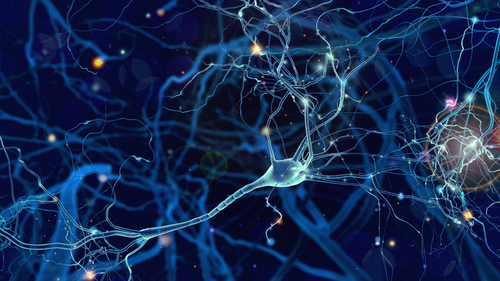Ultrasound Approach Eases Dopaminergic Brain Damage in Mouse Model of Parkinson’s

Using ultrasound coupled with the intravenous injection of microbubbles lessened brain damage in a mouse model of early Parkinson’s and may provide a noninvasive way to successfully deliver therapies into the brains of people with the disease, a study reports.
A clinical trial with Alzheimer’s disease patients has been approved by the U.S. Food and Drug and Administration to test the safety of the new device. Studies in people with Parkinson’s are expected to follow.
The study, “Amelioration of the nigrostriatal pathway facilitated by ultrasound-mediated neurotrophic delivery in early Parkinson’s disease,” appeared in the Journal of Controlled Release.
The inability to cross the blood-brain barrier – a thin membrane that separates the central nervous system (brain and spinal cord) from the circulatory blood system — has precluded the development of successful therapies for patients with neurodegenerative disorders such as Parkinson’s.
Aiming to improve treatment delivery into the brain, a team at Columbia Engineering used transcranial, focused ultrasound coupled with intravenously injected microbubbles containing neurotrophic factors (either through protein or gene delivery) to create a transient opening in the blood-brain barrier.
Neurotrophic factors are a family of molecules, mainly small proteins, that support the growth, survival, and differentiation of both developing and mature neurons. The neurotrophic factors used in the study were glial-derived neurotrophic factor and neurturin, both with beneficial effects in animal models of Parkinson’s.
The team had previously shown that focused ultrasound increased the delivery of neurturin to key Parkinson’s areas in the mouse brain.
They used a mouse model of early-stage Parkinson’s to test whether the combination approach eased damage in the brain’s nigrostriatal dopaminergic pathway — which includes the substantia nigra and the dorsal striatum and shows loss of dopamine-producing neurons during the early stages of Parkinson’s disease.
Unlike ultrasound or neurotrophic factors alone, the combination lessened damage by enabling the entry of these molecules into the brain. Specifically, the researchers found an increased number of nerve cells and nerve fibers, as well as greater levels of dopamine upon use of the combined treatment.
“Our findings provide evidence that the application of [focused ultrasound] at the early stages of [Parkinson’s] facilitates critical neurotrophic delivery that can curb the rapid progression of neurodegeneration while improving the neuronal function,” the scientists wrote.
“This is the first time that anyone has been able to restore a dopaminergic pathway with available drugs at the early stages of Parkinson’s,” Elisa Konofagou, the study’s senior author, said in a press release. “We expect our study will open new therapeutic avenues for the early treatment of central nervous system diseases.”
The new tool uses a neuronavigation system to direct the treatment in real time. “Neurosurgeons use such systems all the time to guide them for neurosurgery,” said Antonios Pouliopoulos, a scientist who worked on the development of the device. “Our group just replaced the surgical instrument with an ultrasound transducer to perform our non-invasive procedure.”
Unlike other groups currently pursuing more efficient treatment delivery into the brain, this device does not require nanoparticles nor magnetic resonance imaging (MRI). Compared with current helmet-shaped systems that use MRI, the new transducer is smaller, faster and about 10 times less expensive. And since it is portable, it may one day be used at home.
Konafagou recently won a four-year $2.5 million grant from the National Institutes of Health to explore a similar device for deep brain stimulation to discover how ultrasound activates nerve cells. She will also receive the 2019 Engineering in Medicine and Biology Society’s Technical Achievement Award for her work in ultrasound imaging and therapy.
“My grandmother has been suffering from dementia for more than five years,” Konofagou said, “so I know first-hand how essential it would be to have a simple device that can be wheeled into the patient’s home and offer a higher quality of life, especially for our rapidly aging population.”






